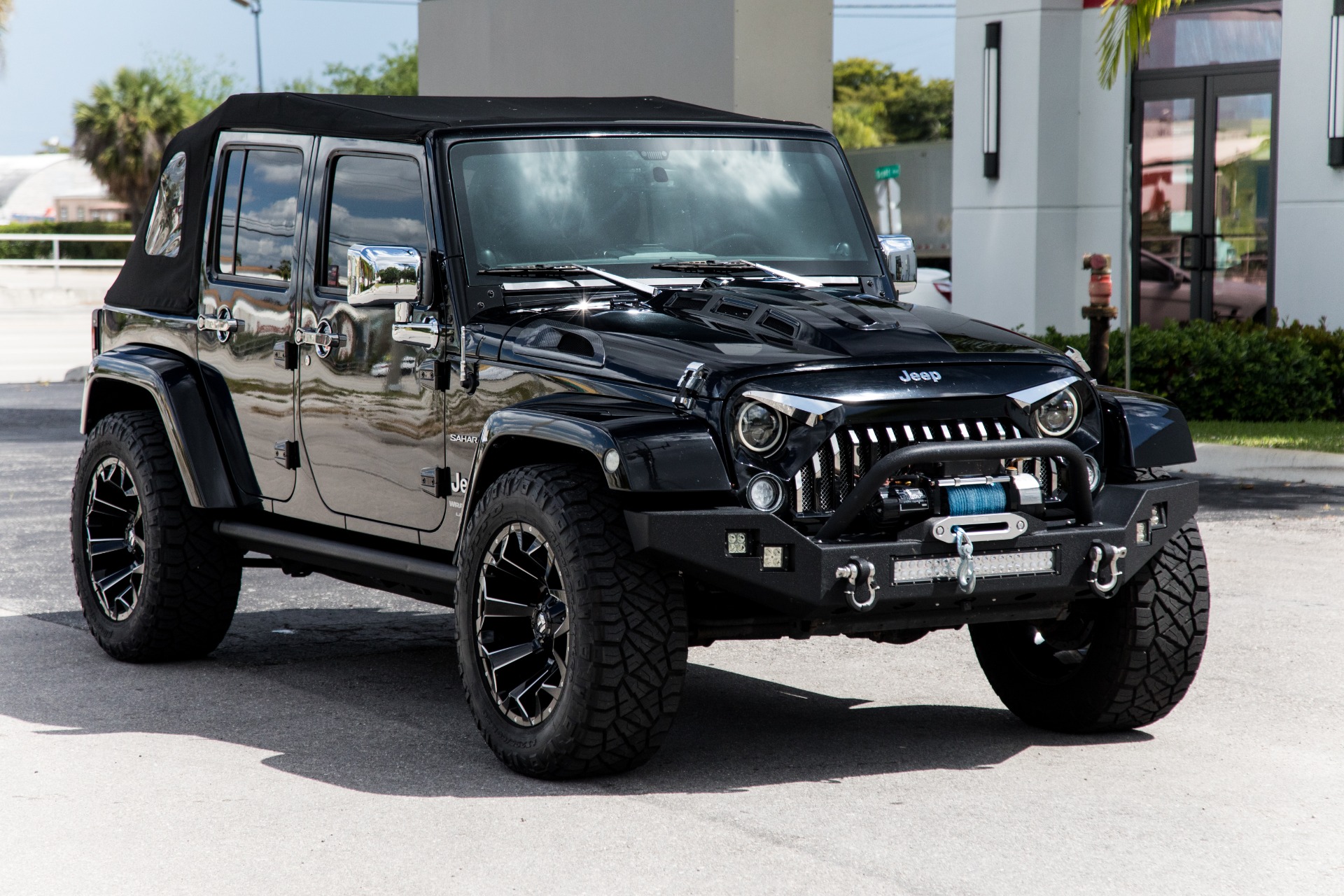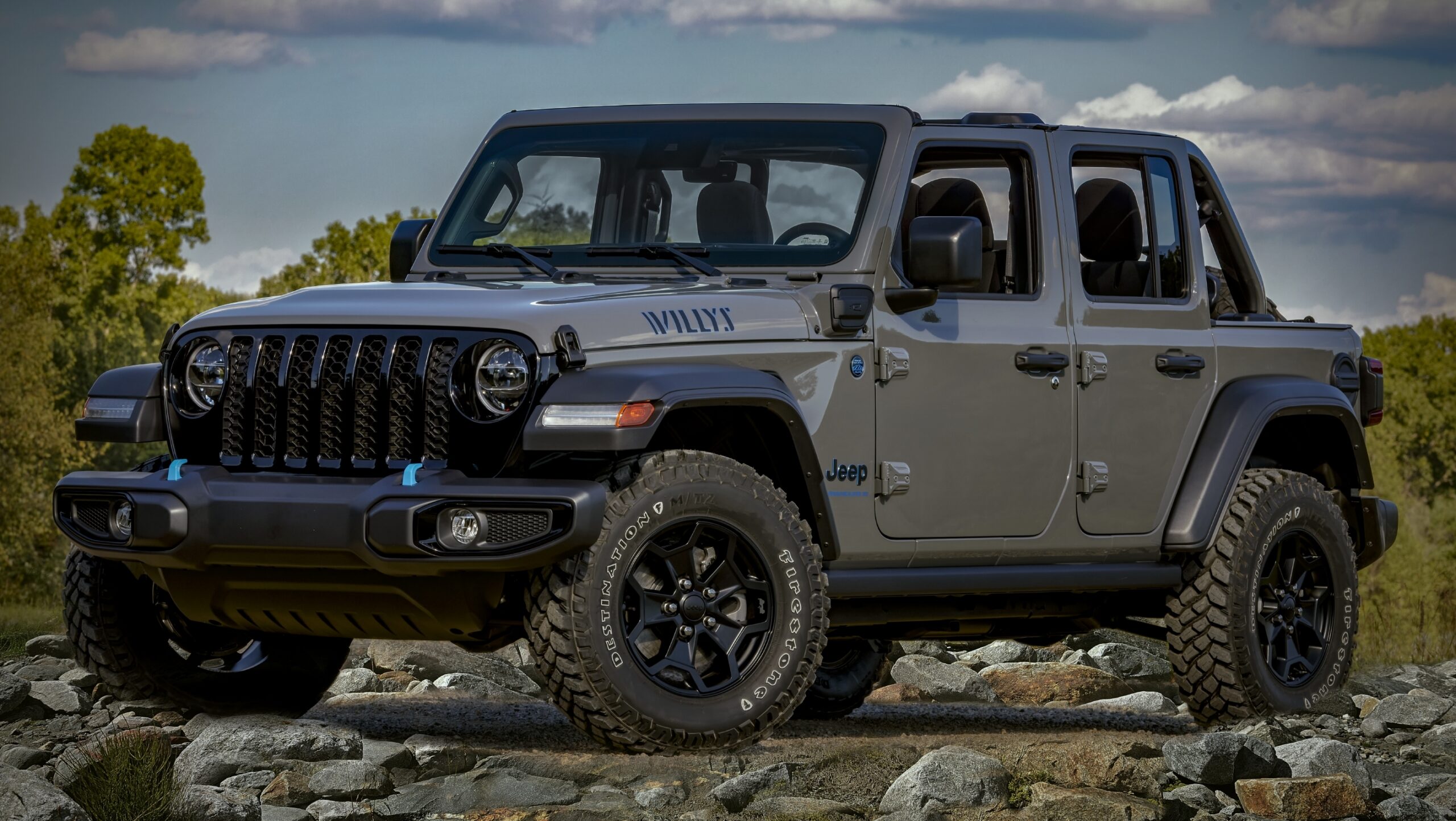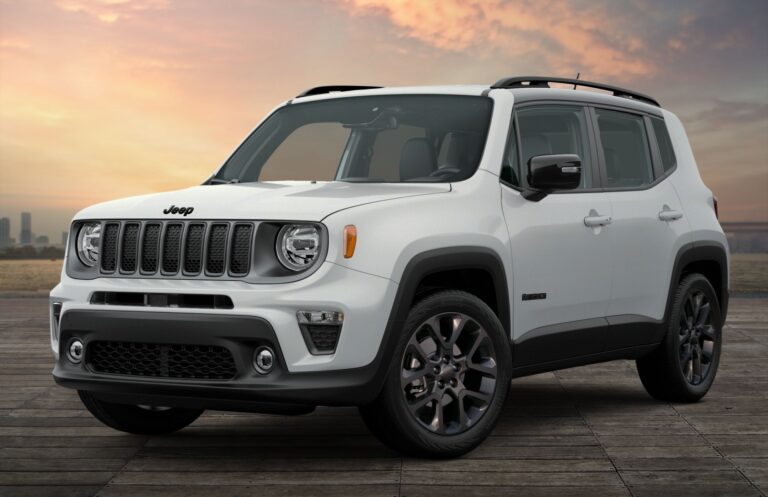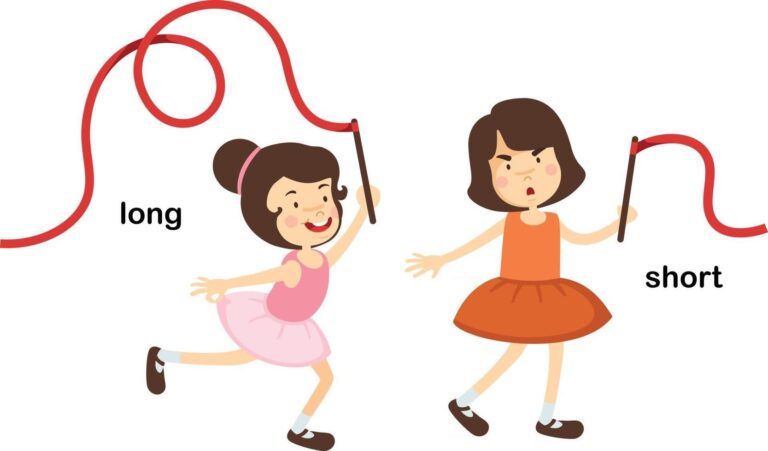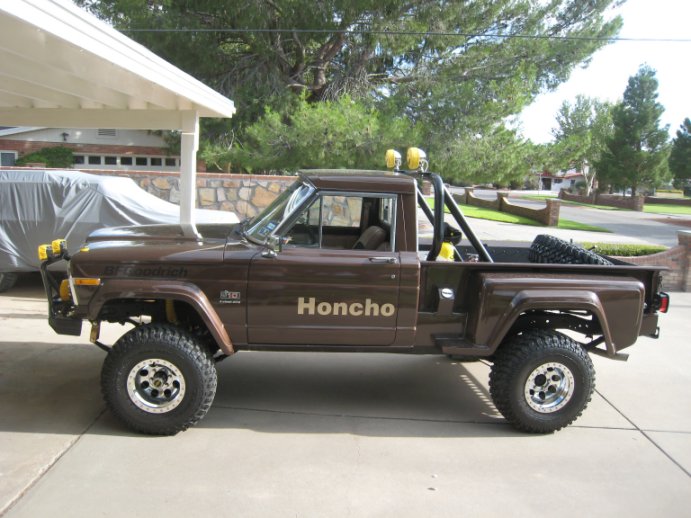Wrangler Jeep Towing Capacity: Unlocking Your Off-Road Companion’s Hidden Utility
Wrangler Jeep Towing Capacity: Unlocking Your Off-Road Companion’s Hidden Utility jeeps.truckstrend.com
The Jeep Wrangler is an icon, celebrated globally for its unparalleled off-road prowess, rugged charm, and the freedom it offers drivers to explore beyond the paved path. While its rock-crawling capabilities and removable tops often steal the spotlight, a crucial aspect of the Wrangler’s versatility often goes overlooked: its towing capacity. Understanding your Wrangler’s towing limits isn’t just about hauling a trailer; it’s about maximizing your vehicle’s utility, ensuring safety on the road, and protecting your investment. This comprehensive guide delves into everything you need to know about Wrangler Jeep towing capacity, from its historical evolution to practical tips for safe and efficient towing.
Understanding Towing Capacity: More Than Just a Number
Wrangler Jeep Towing Capacity: Unlocking Your Off-Road Companion’s Hidden Utility
Towing capacity refers to the maximum weight a vehicle can safely tow, including the weight of the trailer and its cargo. It’s a critical specification determined by the manufacturer based on a complex interplay of factors like engine power, chassis strength, braking systems, and suspension design. Exceeding this limit can lead to a host of problems, including reduced braking performance, instability, accelerated wear on drivetrain components, transmission overheating, and potentially dangerous accidents.
Before diving into specific Wrangler models, it’s essential to grasp a few key terms:
- Gross Vehicle Weight Rating (GVWR): The maximum permissible weight of the fully loaded vehicle (including passengers, cargo, and tongue weight).
- Gross Axle Weight Rating (GAWR): The maximum weight that can be supported by a single axle.
- Gross Combined Weight Rating (GCWR): The maximum permissible weight of the tow vehicle and the loaded trailer combined. This is the absolute maximum weight your entire setup should be.
- Tongue Weight: The downward force exerted by the trailer’s hitch on the towing vehicle’s hitch ball. Ideally, this should be 10-15% of the total trailer weight for stability.
- Payload Capacity: The maximum weight your vehicle can carry, including passengers, cargo, and the trailer’s tongue weight.
![]()
Your towing capacity is intricately linked to these ratings. For example, if you load your Wrangler with passengers and gear, it reduces the remaining payload available for tongue weight, thus effectively reducing the amount you can safely tow.
The Evolution of Wrangler Towing Capacity: A Model-Year Breakdown
The Wrangler’s towing capacity has evolved significantly over its various generations, largely influenced by advancements in engineering, chassis design, and the introduction of four-door models.
Early Wranglers (YJ & TJ Generations: 1987-2006)

These classic Wranglers, known for their rugged simplicity and short wheelbases, typically had a modest towing capacity. Most YJ and TJ models were rated for 1,000 to 2,000 pounds. This made them suitable for light utility trailers, small boat trailers, or perhaps a jet ski. Their shorter wheelbase, while excellent for tight off-road maneuvers, inherently limited their stability and capacity for heavier loads.
JK Wrangler (2007-2018)
The introduction of the JK generation marked a pivotal moment, especially with the debut of the four-door Wrangler Unlimited. This longer wheelbase variant dramatically improved towing stability and capacity.
- JK 2-door: Maintained a towing capacity of 2,000 pounds.
- JK 4-door (Unlimited): Saw a substantial increase to 3,500 pounds. This made the Wrangler Unlimited a far more versatile vehicle, capable of towing small travel trailers, larger pop-up campers, or multiple ATVs.

This jump was a game-changer for many Jeep enthusiasts, allowing them to bring more gear and toys on their adventures.
JL Wrangler (2018-Present)
The current JL generation continues to build on the JK’s foundation, refining performance and introducing new powertrain options. The towing capacities largely mirror the JK:
- JL 2-door: Remains at 2,000 pounds.
- JL 4-door (Unlimited): Continues to offer 3,500 pounds.
It’s important to note that while the core capacity remains, the powertrain choices within the JL lineup (e.g., 2.0L Turbo, 3.6L Pentastar V6, 3.0L EcoDiesel, 4xe Plug-in Hybrid) influence how easily and efficiently your Wrangler handles a load. The Jeep Gladiator (JT), while sharing its platform with the JL Wrangler, is a pickup truck designed with significantly higher towing capacities (up to 7,700 lbs in specific configurations), and should not be confused with the Wrangler’s limits.
Factors Influencing Your Wrangler’s True Towing Prowess
While the manufacturer’s stated capacity provides a baseline, several factors can influence your specific Wrangler’s real-world towing capability:
- Engine Type: Different engines offer varying levels of horsepower and torque. A higher torque output, especially at lower RPMs, is beneficial for towing. The EcoDiesel and the 3.6L Pentastar V6 with its broad torque curve are generally well-suited for towing within the Wrangler’s limits.
- Transmission: Both manual and automatic transmissions can tow, but automatics often offer smoother shifts and better low-speed control for towing. Many modern automatics also feature specific "tow/haul" modes.
- Axle Ratio: This is one of the most critical factors. A numerically higher axle ratio (e.g., 3.73, 4.10) provides more torque to the wheels, making it easier to start and maintain momentum with a heavy load. Wranglers equipped with these "lower" (numerically higher) gears are better suited for towing than those with "taller" gears (e.g., 3.21).
- Wheelbase: As highlighted, the longer wheelbase of the 4-door Unlimited models provides greater stability and, consequently, a higher towing capacity than the 2-door models.
- Tires and Suspension Modifications: Aftermarket lifts, larger tires, and modified suspension components can significantly alter your Wrangler’s handling and stability, potentially reducing its safe towing capacity if not properly engineered. Larger, heavier tires increase unsprung weight and can strain the drivetrain. Always consult with a professional if you plan to tow with a modified vehicle.
- Payload: Remember that anything you add to your Wrangler – passengers, cargo, recovery gear, heavy aftermarket bumpers – directly reduces the available payload for your trailer’s tongue weight. Always factor this into your calculations.
Maximizing Your Wrangler’s Towing Safety and Efficiency
Towing safely requires more than just hooking up a trailer. It demands proper equipment, preparation, and careful driving techniques.
- Proper Hitch Setup: Ensure you have the correct hitch receiver (Class II for 2,000 lbs, Class III for 3,500 lbs) and a ball mount with the appropriate rise or drop to keep your trailer level.
- Tongue Weight is Key: Aim for 10-15% of the total trailer weight on the hitch. Too little tongue weight can cause trailer sway, while too much can overload the rear axle and compromise steering.
- Trailer Brakes: For any trailer over 1,000-1,500 pounds (check your state laws), independent trailer brakes are highly recommended, if not legally required. A brake controller installed in your Wrangler allows you to adjust and activate these brakes from the cabin.
- Weight Distribution Hitches (WDH): While not typically necessary for the Wrangler’s 3,500-pound limit, a WDH can be beneficial for heavier or longer trailers. It helps distribute tongue weight more evenly across all vehicle axles, improving stability and handling.
- Pre-Towing Checklist:
- Tires: Check tire pressure on both the Wrangler and the trailer. Ensure lug nuts are tight.
- Lights: Test all trailer lights (tail, brake, turn signals).
- Connections: Confirm the hitch ball is secure, the coupler is latched, safety chains are crossed and attached, and the electrical connection is snug.
- Load Security: Make sure all cargo on the trailer is properly secured and distributed to prevent shifting.
- Fluids: Check engine oil, transmission fluid, and coolant levels.
- Driving Techniques:
- Slow Down: Reduce your speed significantly. Towing increases stopping distances and reduces maneuverability.
- Increase Following Distance: Give yourself much more room to react.
- Wider Turns: Account for the trailer’s length when turning.
- Braking: Brake earlier and more gently. Use engine braking on downhills to reduce strain on your brakes.
- Monitor Gauges: Keep an eye on engine temperature and transmission temperature, especially on long climbs.
- Avoid Overdrive: In older models, it was common advice to turn off overdrive when towing to prevent transmission overheating. Modern transmissions often manage this automatically, but check your owner’s manual.
What Can a Wrangler Tow? Practical Examples
Given the varying capacities, here’s what you can realistically expect to tow:
-
With 2,000 lbs Capacity (2-door Wranglers):
- Small utility trailers with yard waste or light cargo
- Single jet ski or small personal watercraft
- Small pop-up campers (some models)
- Motorcycles or dirt bikes on a single-axle trailer
- Canoes/kayaks on a small trailer
-
With 3,500 lbs Capacity (4-door Wranglers):
- Medium utility trailers with ATVs, UTVs, or building materials
- Larger pop-up campers or small tear-drop trailers
- Many small travel trailers (carefully check their Gross Vehicle Weight)
- Small fishing boats or bass boats
- Small enclosed cargo trailers
Always verify the exact weight of what you intend to tow (including the trailer’s empty weight and cargo) before hitching up.
Table of Wrangler Jeep Towing Capacity Information
| Wrangler Generation | Body Style | Typical Towing Capacity (lbs) | Key Considerations/Notes |
| :—————— | :——— | :—————————- | :——————————————————————————————————————————————————————————————————————————————————————————————————————————————————————————————————————————————————————————————————————————————————————————————————————————————————————————————————————————————————————————————————————————————————————————————————————————————————————————————————————————————————————————————————————————————————————————————————————————————————————————————————————————————————————————————————————————————————————————————————————————————————————————————————————————————————————————————————————————————————————————————————————————————————————————————————————————————————————————————————————————————————————————————————————————————————————————————————————————————————————————————————————————————————————————————————————————————————————————————————————————————————————————————————————————————————————————————————————————————————————————————————————————————————————————————————————————————————————————————————————————————————————————————————————————————————————————————————————————————————————————————————————————————————————————————————————————————————————————————————————————————————————————————————————————————————————————————————————————————————————————————————————————————————————————————————————————————————————————————————————————————————————————————————————————————————————————————————————————————————————————————————————————————————————————————————————————————————————————————————————————————————————————————————————————————————————————————————————————————————————————————————————————————————————————————————————————————————————————————————————————————————————————————————————————————————————————————————————————————————————————————————————————————————————————————————————————————————————————————————————————————————————————————————————————————————————————————————————————————————————————————————————————————————————————————————————————————————————————————————————————————————————————————————————————————————————————————————————————————————————————————————————————————————————————————————————————————————————————————————————————————————————————————————————————————————————————————————————————————————————————————————————————————————————————————————————————————————————————————————————————————————————————————————————————————————————————————————————————————————————————————————————————————————————————————————————————————————————————————————————————————————————————————————————————————————————————————————————————————————————————————————————————————————————————————————————————————————————————————————————————————————————————————————————————————————————————————————————————————————————————————————————————————————————————————————————————————————————————————————————————————————————————————————————————————————————————————————————————————————————————————————————————————————————————————————————————————————————————————————————————————————————————————————————————————————————————————————————————————————————————————————————————————————————————————————————————————————————————————————————————————————————————————————————————————————————————————————————————————————————————————————————————————————————————————————————————————————————————————————————————————————————————————————————————————————————————————————————————————————————————————————————————————————————————————————————————————————————————————————————————————————————————————————————————————————————————————————————————————————————————————————————————————————————————————————————————————————————————————————————————————————————————————————————————————————————————————————————————————————————————————————————————————————————————————————————————————————————————————————————————————————————————————————————————————————————————————————————————————————————————————————————————————————————————————————————————————————————————————————————————————————————————————————————————————————————————————————————————————————————————————————————————————————————————————————————————————————————————————————————————————————————————————————————————————————————————————————————————————————————————————————————————————————————————————————————————————————————————————————————————————————————————————————————————————————————————————————————————————————————————————————————————————————————————————————————————————————————————————————————————————————————————————————————————————————————————————————————————————————————————————————————————————————————————————————————————————————————————————————————————————————————————————————————————————————————————————————————————————————————————————————————————————————————————————————————————————————————————————————————————————————————————————————————————————————————————————————————————————————————————————————————————————————————————————————————————————————————————————————————————————————————————————————————————————————————————————————————————————————————————————————————————————————————————————————————————————————————————————————————————————————————————————————————————————————————————————————————————————————————————————————————————————————————————————————————————————————————————————————————————————————————————————————————————————————————————————————————————————————————————————————————————————————————————————————————————————————————————————————————————————————————————————————————————————————————————————————————————————————————————————————————————————————————————————————————————————————————————————————————————————————————————————————————————————————————————————————————————————————————————————————————————————————————————————————————————————————————————————————————————————————————————————————————————————————————————————————————————————————————————————————————————————————————————————————————————————————————————————————————————————————————————————————————————————————————————————————————————————————————————————————————————————————————————————————————————————————————————————————————————————————————————————————————————————————————————————————————————————————————————————————————————————————————————————————————————————————————————————————————————————————————————————————————————————————————————————————————————————————————————————————————————————————————————————————————————————————————————————————————————————————————————————————————————————————————————————————————————————————————————————————————————————————————————————————————————————————————————————————————————————————————————————————————————————————————————————————————————————————————————————————————————————————————————————————————————————————————————————————————————————————————————————————————————————————————————————————————————————————————————————————————————————————————————————————————————————————————————————————————————————————————————————————————————————————————————————————————————————————————————————————————————————————————————————————————————————————————————————————————————————————————————————————————————————————————————————————————————————————————————————————————————————————————————————————————————————————————————————————————————————————————————————————————————————————————————————————————————————————————————————————————————————————————————————————————————————————————————————————————————————————————————————————————————————————————————————————————————————————————————————————————————————————————————————————————————————————————————————————————————————————————————————————————————————————————————————————————————————————————————————————————————————————————————————————————————————————————————————————————————————————————————————————————————————————————————————————————————————————————————————————————————————————————————————————————————————————————————————————————————————————————————————————————————————————————————————————————————————————————————————————————————————————————————————————————————————————————————————————————————————————————————————————————————————————————————————————————————————————————————————————————————————————————————————————————————————————————————————————————————————————————————————————————————————————————————————————————————————————————————————————————————————————————————————————————————————————————————————————————————————————————————————————————————————————————————————————————————————————————————————————————————————————————————————————————————————————————————————————————————————————————————————————————————————————————————————————————————————————————————————————————————————————————————————————————————————————————————————————————————————————————————————————————————————————————————————————————————————————————————————————————————————————————————————————————————————————————————————————————————————————————————————————————————————————————————————————————————————————————————————————————————————————————————————————————————————————————————————————————————————————————————————————————————————————————————————————————————————————————————————————————————————————————————————————————————————————————————————————————————————————————————————————————————————————————————————————————————————————————————————————————————————————————————————————————————————————————————————————————————————————————————————————————————————————————————————————————————————————————————————————————————————————————————————————————————————————————————————————————————————————————————————————————————————————————————————————————————————————————————————————————————————————————————————————————————————————————————————————————————————————————————————————————————————————————————————————————————————————————————————————————————————————————————————————————————————————————————————————————————————————————————————————————————————————————————————————————————————————————————————————————————————————————————————————————————————————————————————————————————————————————————————————————————————————————————————————————————————————————————————————————————————————————————————————————————————————————————————————————————————————————————————————————————————————————————————————————————————————————————————————————————————————————————————————————————————————————————————————————————————————————————————————————————————————————————————————————————————————————————————————————————————————————————————————————————————————————————————————————————————————————————————————————————————————————————————————————————————————————————————————————————————————————————————————————————————————————————————————————————————————————————————————————————————————————————————————————————————————————————————————————————————————————————————————————————————————————————————————————————————————————————————————————————————————————————————————————————————————————————————————————————————————————————————————————————————————————————————————————————————————————————————————————————————————————————————————————————————————————————————————————————————————————————————————————————————————————————————————————————————————————————————————————————————————————————————————————————————————————————————————————————————————————————————————————————————————————————————————————————————————————————————————————————————————————————————————————————————————————————————————————————————————————————————————————————————————————————————————————————————————————————————————————————————————————————————————————————————————————————————————————————————————————————————————————————————————————————————————————————————————————————————————————————————————————————————————————————————————————————————————————————————————————————————————————————————————————————————————————————————————————————————————————————————————————————————————————————————————————————————————————————————————————————————————————————————————————————————————————————————————————————————————————————————————————————————————————————————————————————————————————————————————————————————————————————————————————————————————————————————————————————————————————————————————————————————————————————————————————————————————————————————————————————————————————————————————————————————————————————————————————————————————————————————————————————————————————————————————————————————————————————————————————————————————————————————————————————————————————————————————————————————————————————————————————————————————————————————————————————————————————————————————————————————————————————————————————————————————————————————————————————————————————————————————————————————————————————————————————————————————————————————————————————————————————————————————————————————————————————————————————————————————————————————————————————————————————————————————————————————————————————————————————————————————————————————————————————————————————————————————————————————————————————————————————————————————————————————————————————————————————————————————————————————————————————————————————————————————————————————————————————————————————————————————————————————————————————————————————————————————————————————————————————————————————————————————————————————————————————————————————————————————————————————————————————————————————————————————————————–Wrangler Jeep Towing Capacity: A Comprehensive Guide to its Capabilities and Considerations
The Jeep Wrangler, an undisputed icon of adventure and off-road capability, holds a special place in the hearts of enthusiasts worldwide. While its rugged exterior, removable doors, and legendary 4×4 systems often grab the spotlight, many owners and prospective buyers also consider its practical utility, particularly its towing capacity. Understanding your Wrangler’s ability to tow is crucial for expanding its versatility, whether you’re hauling camping gear, a small boat, or off-road toys. This comprehensive guide will delve into the intricacies of Wrangler Jeep towing capacity, exploring what it means, how it has evolved, the factors that influence it, and the best practices for safe and efficient towing.
Understanding Towing Capacity: The Foundation of Safe Hauling
Towing capacity isn’t just an arbitrary number; it’s a meticulously calculated maximum weight a vehicle can safely pull. This figure is determined by the manufacturer based on a complex interplay of the vehicle’s engine power, chassis strength, suspension design, braking system effectiveness, and cooling capabilities. Exceeding this limit can lead to severe consequences, including compromised braking, instability, excessive wear on the drivetrain and suspension components, overheating, and a heightened risk of accidents.
To truly grasp towing capacity, it’s vital to familiarize yourself with a few key terms:
- Gross Vehicle Weight Rating (GVWR): The maximum permissible total weight of the vehicle itself, including its curb weight, all passengers, cargo, and any accessories.
- Gross Axle Weight Rating (GAWR): The maximum weight that can be safely supported by a single axle (front or rear).
- Gross Combined Weight Rating (GCWR): The absolute maximum allowable weight of the fully loaded tow vehicle (your Wrangler) and the fully loaded trailer combined. This is the ultimate limit for your entire setup.
- Tongue Weight (TW): The downward force exerted by the trailer’s hitch onto the towing vehicle’s hitch ball. For optimal stability and safety, tongue weight should typically fall between 10% and 15% of the total loaded trailer weight. Incorrect tongue weight is a leading cause of trailer sway.
- Payload Capacity: This is the maximum weight your Wrangler can carry, which includes the weight of all occupants, cargo inside the vehicle, and the trailer’s tongue weight. Every pound you add inside the Wrangler directly reduces the remaining payload available for tongue weight, thereby impacting your effective towing capability.
These ratings are interconnected. For instance, if your Wrangler is fully loaded with passengers and gear, it reduces the remaining payload available for the trailer’s tongue weight, effectively lowering the maximum trailer weight you can safely tow. Always consult your specific vehicle’s owner’s manual and the sticker on the driver’s side door jamb for exact ratings.
The Evolution of Wrangler Towing Capacity Across Generations
The Wrangler’s towing capabilities have steadily improved and diversified over its storied history, primarily influenced by design changes, particularly the introduction of the four-door model.
Early Wranglers (YJ & TJ Generations: 1987-2006)
The initial generations of the Wrangler, including the leaf-sprung YJ and the coil-sprung TJ, were renowned for their compact dimensions and exceptional off-road agility. However, their relatively short wheelbases and simpler designs inherently limited their towing prowess. Most YJ and TJ models typically had a towing capacity ranging from 1,000 to 2,000 pounds. This capacity was suitable for very light loads such as small utility trailers, a single jet ski, or a dirt bike. While capable off-road, these early Wranglers were not designed for significant towing duties.
JK Wrangler (2007-2018): A Game-Changer for Utility
The launch of the JK generation in 2007 marked a significant leap forward in the Wrangler’s versatility, largely due to the introduction of the four-door Wrangler Unlimited. This longer wheelbase variant provided enhanced stability and a more robust platform for towing.
- JK 2-door: Maintained a towing capacity of 2,000 pounds, consistent with its shorter wheelbase and lighter curb weight.
- JK 4-door (Unlimited): Saw a substantial increase to 3,500 pounds. This elevated capacity transformed the Wrangler Unlimited into a much more practical adventure vehicle, capable of comfortably towing small travel trailers, larger pop-up campers, or multiple ATVs and UTVs. This increased capability significantly broadened the appeal of the Wrangler to those seeking both off-road adventure and practical utility.
JL Wrangler (2018-Present): Refinement and Modern Powertrains
The current JL generation builds upon the JK’s success, offering advanced powertrains, improved interior comfort, and refined driving dynamics. The towing capacities for the JL largely mirror those of its predecessor, reflecting the continued design philosophy.
- JL 2-door: Retains a towing capacity of 2,000 pounds.
- JL 4-door (Unlimited): Continues to offer a robust 3,500 pounds.
While the maximum capacity remains similar, the JL’s diverse engine options – including the 2.0L Turbo, 3.6L Pentastar V6, 3.0L EcoDiesel, and the 4xe Plug-in Hybrid – provide different torque characteristics that can influence the towing experience. It’s crucial to differentiate the Wrangler from the Jeep Gladiator (JT) pickup truck. Though based on the JL platform, the Gladiator is engineered specifically for higher towing capacities, reaching up to 7,700 pounds in certain configurations, far exceeding any Wrangler model.
Key Factors Influencing Your Wrangler’s True Towing Prowess
Beyond the stated maximums, several critical factors can influence your specific Wrangler’s real-world towing performance and safety. Understanding these helps you make informed decisions.
- Engine Type and Performance: Different engines provide varying levels of horsepower and, more importantly for towing, torque. The 3.6L Pentastar V6, with its broad torque curve, and the 3.0L EcoDiesel (if equipped) offer ample low-end torque beneficial for pulling heavy loads. The 2.0L turbocharged engine, while powerful, might require higher RPMs to access its peak towing performance compared to a naturally aspirated V6 or a diesel. The 4xe hybrid system’s instant electric torque also aids in initial acceleration when towing.
- Axle Ratio: This is arguably one of the most significant mechanical factors. A numerically higher axle ratio (often referred to as "shorter" or "lower" gearing, e.g., 3.73, 4.10, or even 4.56 in Rubicon models) provides more torque multiplication to the wheels. This makes it easier to get a heavy load moving from a standstill and maintain speed on inclines, reducing strain on the engine and transmission. Wranglers equipped with "taller" (numerically lower) ratios like 3.21 will struggle more with towing.
- Transmission Type: Both manual and automatic transmissions are capable of towing. Modern automatic transmissions often feature sophisticated programming with "tow/haul" modes that optimize shift points and lock-up for towing, providing smoother operation and better control.
- Wheelbase: As previously emphasized, the longer wheelbase of the 4-door Unlimited models inherently provides greater stability when towing compared to the more compact 2-door models. This increased stability is a primary reason for their higher towing capacity.
- Tires and Suspension Modifications: While popular for off-roading, aftermarket lift kits, larger and heavier tires, and modified suspension components can negatively impact your Wrangler’s safe towing capacity. Larger tires effectively change your final drive ratio (making it numerically lower), reducing torque. Modified suspensions can alter geometry and stability. If your Wrangler is modified, it’s crucial to have a professional assess its towing suitability and potentially adjust your towing limits downwards.
- Payload and GCWR: Always remember that your Wrangler’s payload capacity directly impacts how much trailer tongue weight it can support. If you load your Wrangler with passengers, camping gear, a full fuel tank, and
